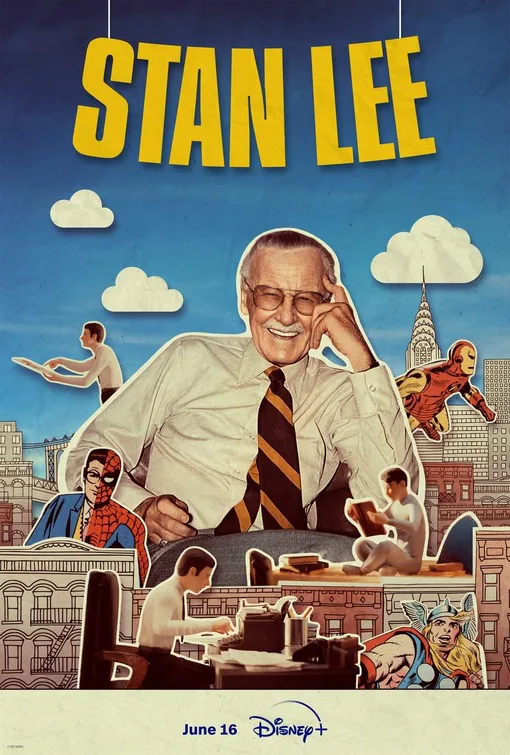I remember my first Marvel comic. I was a teenage fan of DC Comics’ Superman, who seemed to me to be the ideal superhero with an unquestioning dedication to “truth, justice, and the American way.” He was ever-stalwart, cheerful, and delightfully under-appreciated in his Clark Kent persona. And then someone gave me Marvel’s Fantastic Four. Here were superheroes who lived not in the made-up Metropolis but in real-life New York City. Their stories featured three elements I had never seen before in a comic: subversive humor, a slangy catchphrase (“It’s clobberin’ time!”), and … bickering. These characters had cool superpowers, but they worried and were unsure of themselves and made mistakes. They had lives and personalities that felt real.
I never lost my love for Superman, but I was thrilled by this new world that felt deliciously subversive and somehow accessible. I won’t say our son Ben was named after the Fantastic Four’s Ben Grimm, but I won’t say he wasn’t.
Fantastic Four. X-Men. Spider-Man. Thor. Black Panther. Iron Man. The Hulk. They are all part of the world created by Stan Lee, who was a teenager when he became an office boy and then a writer and editor for what would become Marvel Comics. In this documentary by David Gelb, Lee tells his own story and, through it, the story of how comics reflected and shaped their times from the 1940s to the present day, when movie special effects finally caught up with comic books’ ability to depict any fantasy setting. But Lee might say, the way he shaped the era. Lee was never shy about taking credit; in a way, his superpower was his ego.
The real-life audio and visual images are well-chosen, though the stories are unlikely to surprise anyone who has ever collected comics or attended a Con. And for a movie about a medium that is all about conveying action with eye-popping images of super-punches and flying through skyscrapers on spider webs, the archival footage oddly alternates with static, doll-house-like re-creations of people and settings, more suitable for “Severance” opening credits than a story about superheroes.
As noted, Lee was not shy about telling his story (emphasis on his). In his final years, he served as an ambassador for Marvel, speaking at colleges and cons, going on any talk show that would have him, and providing cameos in blockbuster films. Lee was, above all, a storyteller. He always did a great job of making what he did at Marvel seem impressive, important, and fun.
Perhaps it was because he was a teenager when he started writing comics that he remained so connected to what young people needed in stories. “Our superheroes are the kind of people that you or I would be if we had a superpower,” he said. It was his idea to create a teenage superhero who would have teenage problems. Turned down by a boss who insisted that no one wanted to read about an adolescent superhero, Lee and artist Steve Ditko snuck it into what was supposed to be the final issue of a series called Amazing Fantasy. (“No one cares what’s in the final issue of a series that is being canceled.”) Lee says he got the idea for Spidey’s powers from watching a fly. Wouldn’t it be great to have superhero powers inspired by an insect’s strength and its ability to crawl on walls and produce a web? Later, he imagined a team of teenage superheroes in the X-Men.
Lee says he always knew he was going to become somebody important. But at first, he did not think of comics as important. He “saved” his real name, Stanley Martin Lieber, for the serious writing he planned to do someday. Later, he learned to think of comic books as having an important role to play. During WWII, Lee served in the army, and one of his assignments was to find a way to reduce the training time for the soldiers processing payroll. He reduced it from six months to six weeks by conveying the information in the format he understood best—comics.
From that, he learned, “You can convey a story faster, more clearly, and more enjoyably than any other way short of motion pictures.” Later, he learned the value of writing that was purely entertaining. And finally, yes, he learned that with great power comes great responsibility. He could have an influence on his readers and make them more inclusive. One of the film’s most fascinating moments begins with a letter from the government asking him to put an anti-drug story in a comic. He wrote a three-part story that included a cautionary tale about a friend of Peter Parker/Spider-Man. The Comics Code Authority refused to authorize it because they forbade any mention of drugs. Lee and publisher Martin Goodman published it anyway.
The documentary also includes a testy exchange from a radio show between Stan Lee and his long-time partner, the legendary comic artist Jack Kirby, about who should get credit for creating the characters. There is a strong implication that Ditko left Marvel for the same reason.
Lee bragged about creating superheroes with flaws. He was less willing to admit his own: “It’s an impossible task, and I don’t know how I managed,” is a typical not-so-humblebrag. But Lee’s irrepressible joi de vivre and his recollections of the wild days shifting from story-first to pictures-first and fill-in-the-story-later are as much fun as he would have hoped. They might even leave you humming the Merry Marvel Marching Society song, or shouting, “Excelsior!”
Now streaming on Disney+.




















